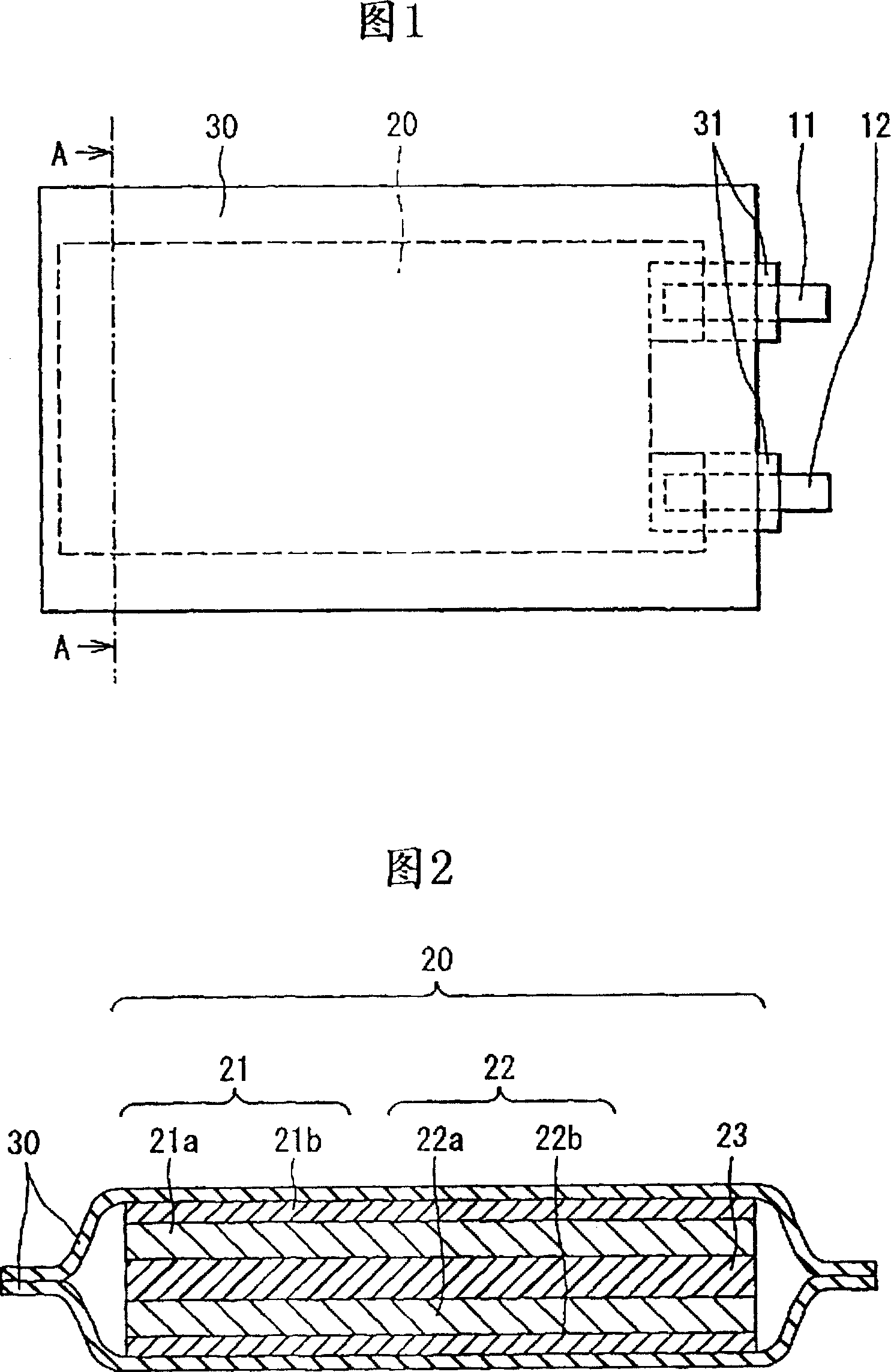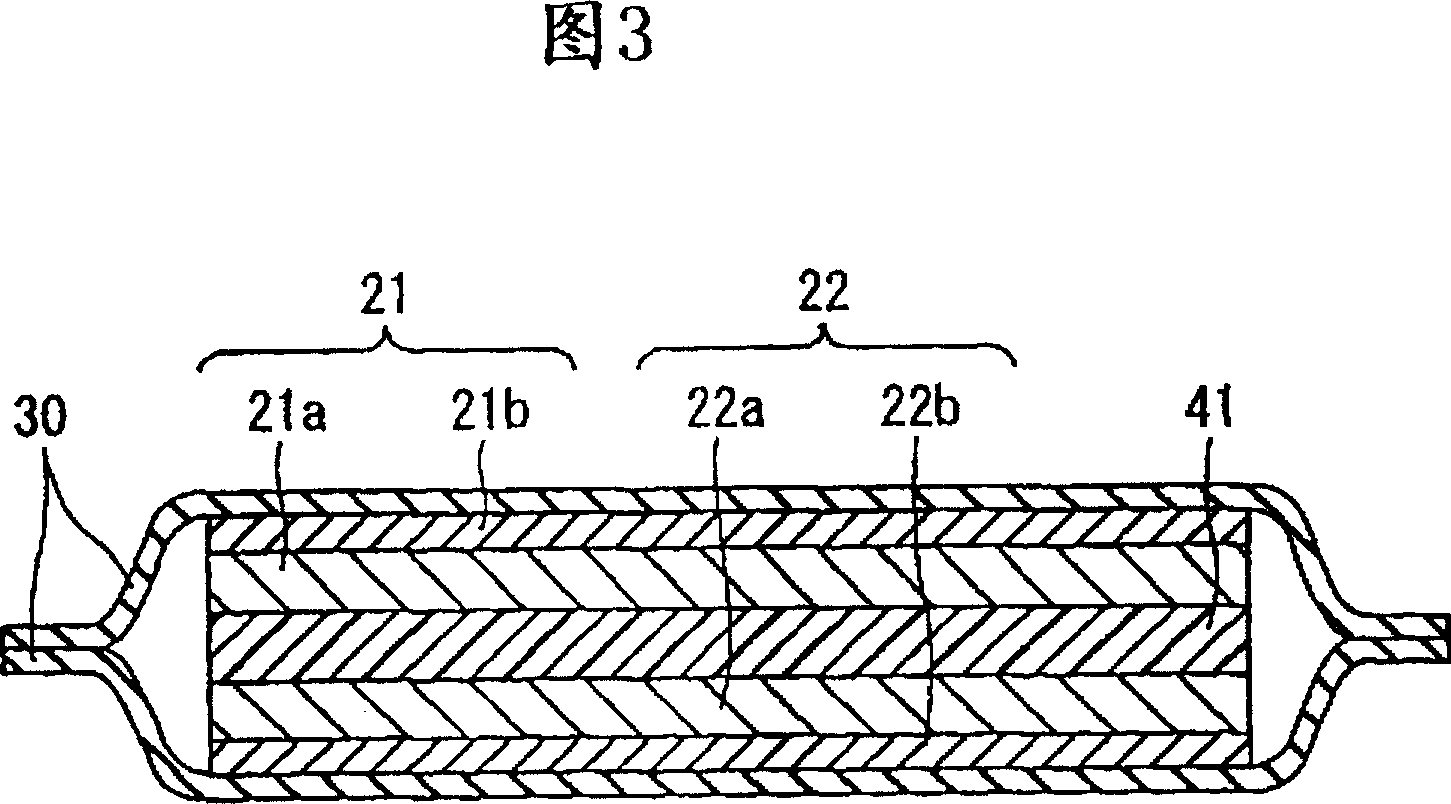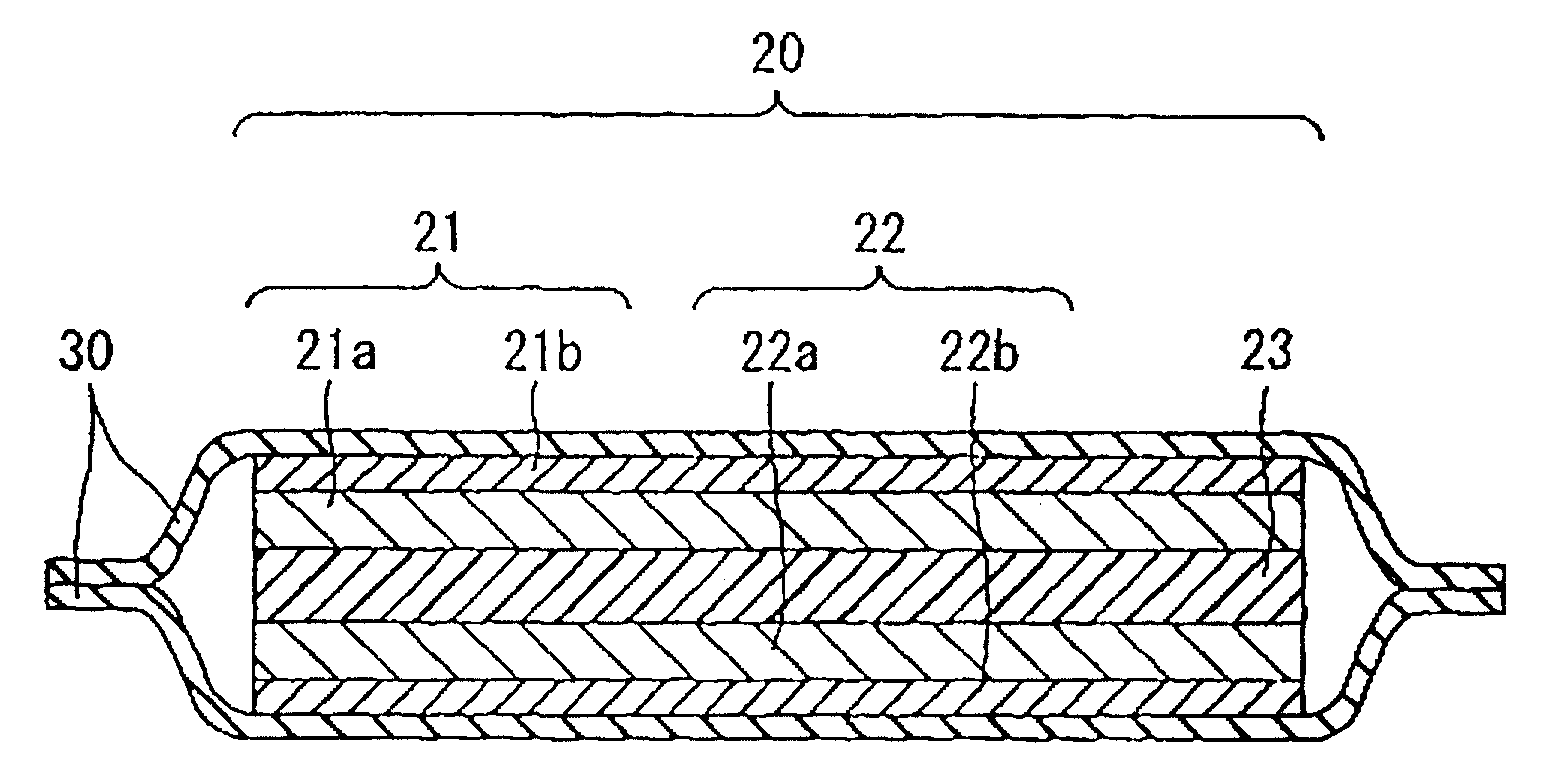Solid or gel electrolyte and cells using same
A gel electrolyte and solid technology, applied in the direction of non-aqueous electrolyte battery, non-aqueous electrolyte battery electrode, electrolyte immobilization/gelation, etc., can solve the problems of charging/discharging efficiency or charging/discharging characteristics deterioration
- Summary
- Abstract
- Description
- Claims
- Application Information
AI Technical Summary
Problems solved by technology
Method used
Image
Examples
no. 1 example
[0029] Fig. 1 shows a planar structure of a battery according to a first embodiment of the present invention. Fig. 2 is a cross-sectional structure cut along line A-A in Fig. 1 . A battery is obtained by encapsulating a battery unit 20 to which a positive electrode lead 11 and a negative electrode lead 12 are connected in an external chamber 30 . The battery device 20 has a structure in which a positive electrode 21 and a negative electrode 22 are laminated with a separator 23 with an electrolyte interposed therebetween.
[0030] The composition of the positive electrode 21 is, for example, a positive electrode mixture layer 21a and a positive electrode current collector layer 21b. The positive electrode mixture layer 21a is placed on the side of the positive electrode collector layer 21b. Although not shown in the drawings, the positive electrode mixture layer 21a may be placed on both sides of the positive electrode collector layer 21b. Positive electrode collector layer ...
no. 2 example
[0064] Fig. 3 shows a cross-sectional structure of a battery according to a second embodiment of the present invention. FIG. 3 corresponds to a sectional structure cut along line A-A in FIG. 1 . The battery has the same configuration, reaction, and effect as those of the first embodiment, except that the battery contains electrolyte 41 instead of that of the first embodiment battery, and the battery does not contain a separator. Therefore, the same numerals and signs are used for the same structural elements and detailed descriptions are omitted.
[0065] The electrolyte 41 is a so-called high-polymer solid electrolyte and contains, for example, at least carboxylic acid or carboxylate, a high polymer, and a lithium salt as an electrolyte salt. In other words, it is the same as the electrolyte of the first embodiment except that the plasticizer is not included. As the high polymer, a high polymer having ion conductivity can be used other than that described in the first embod...
PUM
 Login to View More
Login to View More Abstract
Description
Claims
Application Information
 Login to View More
Login to View More - R&D
- Intellectual Property
- Life Sciences
- Materials
- Tech Scout
- Unparalleled Data Quality
- Higher Quality Content
- 60% Fewer Hallucinations
Browse by: Latest US Patents, China's latest patents, Technical Efficacy Thesaurus, Application Domain, Technology Topic, Popular Technical Reports.
© 2025 PatSnap. All rights reserved.Legal|Privacy policy|Modern Slavery Act Transparency Statement|Sitemap|About US| Contact US: help@patsnap.com



